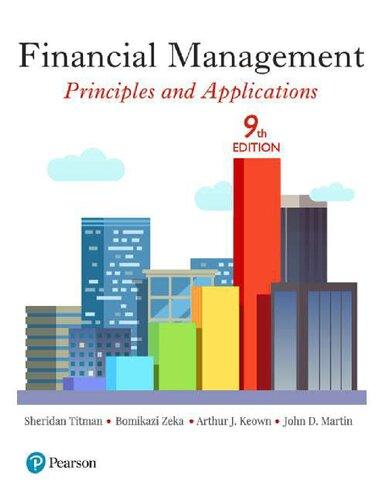The investment, financial, and profitability characteristics of different industries vary, often significantly. For example, some industries require substantial investments in property, plant, and equipment, while in others a larger proportion is invested in liquid assets such as cash and accounts receivable. Differences also frequently exist in the means of financing assets. One industry may have to rely extensively on long-term debt, while in another trade credit is readily available. Also, certain measures of profitability and asset utilization will reveal significantly different results in industry comparisons. Financial statements and the ratios computed from them reflect these and other differences among industries. The data file for this exem presents balance-sheet percentages and selected ratios for one company chosen from each of the 5 industries listed below. Study this information and match each set of numbers with the correct industry.
- Automobile manufacturer (General Motors)
- Department store chain (Macy's)
- Drug store chain (Walgreen)
- Regional airline (Southwest Air)
- Supermarket chain (Safeway)
PLEASE USE THE GIVEN INFORMATION TO MATCH EACH COMPANY TO THE CORRECT FIGURES AND GIVE ONE REASON WHY


PART 5 Balance Sheet (in percentage of assets) Company 3 1 4 5 2 5.4% 12.7% 0.5% Cash and securities Receivables Inventories 3.3% 5.2 16.5% 2.5 6.2 25.8 30.2 0.6 11.0 55.3 19.3 25.9 1.0 7.3 1.8 1.1 2.9 Other current assets Plant, property, and equipment (net) Total assets 79.4 50.4 34.3 60.6 40.4 100.0% 100.0% 100.0% 100.0% 100.0% 1.0% 1.9% 0.9% 10.3% 4.9% 9.6 19.4 17.1 9.6 2.0 7.0 15.8 8.2 16.2 Notes payable Accounts payable Other current liabilities Long-term debt and leases Preferred stock Owner's equity Total liabilities and equity 19.8 21.5 36.1 13.3 29.0 40.7 0.0 0.0 0.3 0.0 0.0 43.9 49.6 44.8 23.2 53.9 100.0% 100.0% 100.0% 100.0% 100.0% Selected Ratios D E F J K Current ratio 2.07 1.45 1.77 1.50 1.65 Acid test 2.00 1.13 0.28 0.77 0.93 LIFO LIFO LIFO LIFO AvCost 125.00 5.60 6.20 16.80 6.50 28 28 3 68 5 3.41 0.79 1.46 3.50 5.1% 3.5% 8.3% 2.4% 9.3% 2.7% 161.0% 1.8% 1.1% Inventory method Inventory turnover (as reported) AR collection period (days) Net sales/Total assets Net profit/Total assets (return on assets) Net profit/Net sales (net profit margin) Net profit/Net worth (return on equity) Dividends/Net income (payout ratio) Total assets/Net worth Notes payable and long-term debt/Total assets Long-term debt/Net worth Market price/Book value Dividends/Market price Price/Earnings ratio Beta 16.6% 32.1% 1.8% 2.3% 3.4% 23.6% 185.5% 37.1% 67.0% 0.85 20.8% 26.9% 223.3% 29.9% 7.9% 55.0% 430.3% 11.5% 50.0% 225.7% 26.3% 48.4% 0.63 7.9% 201.6% 15.2% 50.9% 64.8% 2.62 26.8% 2.87 1.9% 17.3 175.0% 0.67 6.1% 0.9% 2.1% 25.5 12.7 9.0 6.3 1.0 1.2 1.2 0.9 0.9 PART 5 Balance Sheet (in percentage of assets) Company 3 1 4 5 2 5.4% 12.7% 0.5% Cash and securities Receivables Inventories 3.3% 5.2 16.5% 2.5 6.2 25.8 30.2 0.6 11.0 55.3 19.3 25.9 1.0 7.3 1.8 1.1 2.9 Other current assets Plant, property, and equipment (net) Total assets 79.4 50.4 34.3 60.6 40.4 100.0% 100.0% 100.0% 100.0% 100.0% 1.0% 1.9% 0.9% 10.3% 4.9% 9.6 19.4 17.1 9.6 2.0 7.0 15.8 8.2 16.2 Notes payable Accounts payable Other current liabilities Long-term debt and leases Preferred stock Owner's equity Total liabilities and equity 19.8 21.5 36.1 13.3 29.0 40.7 0.0 0.0 0.3 0.0 0.0 43.9 49.6 44.8 23.2 53.9 100.0% 100.0% 100.0% 100.0% 100.0% Selected Ratios D E F J K Current ratio 2.07 1.45 1.77 1.50 1.65 Acid test 2.00 1.13 0.28 0.77 0.93 LIFO LIFO LIFO LIFO AvCost 125.00 5.60 6.20 16.80 6.50 28 28 3 68 5 3.41 0.79 1.46 3.50 5.1% 3.5% 8.3% 2.4% 9.3% 2.7% 161.0% 1.8% 1.1% Inventory method Inventory turnover (as reported) AR collection period (days) Net sales/Total assets Net profit/Total assets (return on assets) Net profit/Net sales (net profit margin) Net profit/Net worth (return on equity) Dividends/Net income (payout ratio) Total assets/Net worth Notes payable and long-term debt/Total assets Long-term debt/Net worth Market price/Book value Dividends/Market price Price/Earnings ratio Beta 16.6% 32.1% 1.8% 2.3% 3.4% 23.6% 185.5% 37.1% 67.0% 0.85 20.8% 26.9% 223.3% 29.9% 7.9% 55.0% 430.3% 11.5% 50.0% 225.7% 26.3% 48.4% 0.63 7.9% 201.6% 15.2% 50.9% 64.8% 2.62 26.8% 2.87 1.9% 17.3 175.0% 0.67 6.1% 0.9% 2.1% 25.5 12.7 9.0 6.3 1.0 1.2 1.2 0.9 0.9








